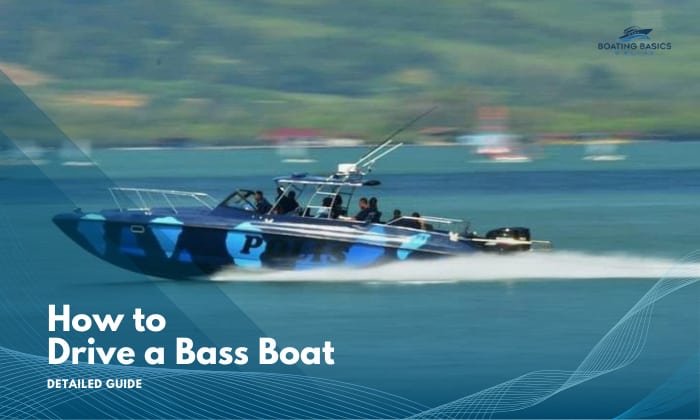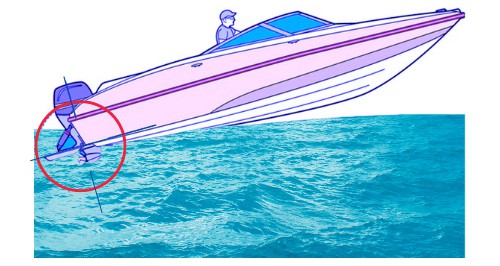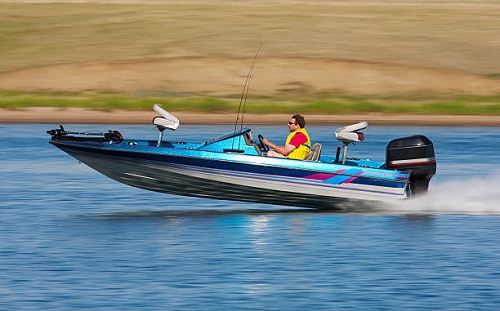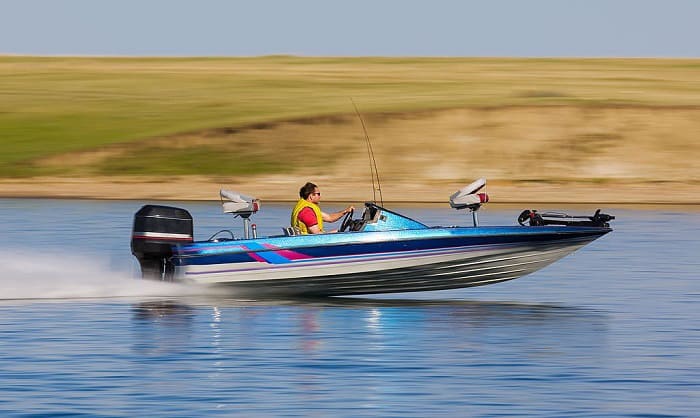Being able to learn how to drive a bass boat or any type of boat is a significant milestone for any budding boat operator. At best, it’s no different from other vessels, other than the fact that you will likely deal more with shallow-water navigation and doing some specialized activity like fishing as you use the bass boat.
This guide will serve as your instructor. It will expound on tips and tricks for beginners, particularly driving tips and a few pointers on how to dock a bass boat. More importantly, you’ll learn how to trim a bass boat for better maneuvering and safety.
Table of Contents
Preparations to Take Before Driving a Bass Boat
- Always wear a life jacket. Make sure it’s approved by the U.S. Coast Guar Better if it’s auto-inflatable.
- Attach the kill switch to the life jacket, so that in the unlikely event of you getting thrown overboard, the engine will immediately be turned off.
- Familiarize yourself with the Mind the layout and controls, the placement of the throttle, navigation lights, steering wheel, and other tools you need to drive properly.
- Check the gas levels, especially prior to launching. Make sure all the straps on the trailer are unhooked.
- Study the lake or any other body of water you’ll operate a bass tracker It doesn’t hurt to know where the safe places and lanes are and whether the place is frequented by people. This is why I advise you to seize the opportunity to learn from someone who is already familiar with the local waterways of your area.
Steps and Tips to Drive a Bass Boat
1. Start the motor then trim it all the way down.
Since the majority of bass boats come with an outboard motor, I had to make this first vital step. You can completely skip this if you have a trolling motor, but I’m going to assume that you have an outboard with all the steps I’ve outlined here for the reason above.
Why do we need to trim the motor down? This is so we can get on plane, which is important to achieve maximum speed, efficiency, maneuverability, better visibility over the bow, and to ensure overall safety.
To trim the motor all the way down means the motor is in its lowest tilt position (i.e. its propeller is fully submerged), as is depicted in the picture below. Each boat has a different layout and throttle for trimming, emphasizing the importance of knowing your boat, at least, on a fundamental level.
2. Give it some gas to get on the plane.
The speed at which boats rise on plane varies. Most bass boat motors need a good amount of gas to get it up on plane.
You should be able to tell when a boat is on plane by feel, but here are some of the signs that apply every time you drive a powerboat that’s powered by an outboard:
- The bow should start to drop after rising; although, this may not be too obvious in some vessels.
- There should also be a palpable reduction in hull friction, so the boat will start speeding up at a faster rate compared to when you’re just getting up on plane.
Once you confirm that the boat has planed out, it’s time to carefully trim the motor up. This action should get the bow of the boat up a bit.
Here’s a video that shares some of the invaluable trimming tips I still live by every time I start a bass boat.
The gist is to not over-trim your motor all the way up, especially once it has planed out, so you can achieve optimal efficiency. Otherwise, you’ll only be wasting all that energy and the ride may be noticeably rough.
One good sign to look at is if water is breaking behind you or if water is splashing off to your sides.
3. Adjust your trim accordingly to speed up or slow down.
A bass boat with an outboard motor is unique in that you control how fast or slow it goes using mostly the trim.
It doesn’t have a brake, so you have to trim it down if you want to slow down. This is especially important if you drive a bass boat in rough water. The same can be said if you drive a boat through a wake – it’s actually better if you can avoid it.
Trust me, you don’t want to slam and get caught in big waves – you ride them instead, and you’ll do just that by taking it slow. To be completely safe, trim your motor all the way down if you’re in choppy waters and keep your speed in the 20s to mid-20s mph.
Watch this video for more tips on how to handle rough waters on a bass boat:
For guidelines on how to handle shallow water, this video has helped me a lot:
Of course, doing the opposite of trimming it up results in more acceleration. Incidentally, if you want to know the answer to how fast does a bass boat go? It can top at a whopping 80 miles per hour! You’ll likely experience this first-hand if you drive a Bullet bass boat.
4. Practice docking your boat.
Once you learn to drive a boat, you should be just as proactive in mastering how to dock it. A bass boat is really no different from any other vessel in this regard. Here are a couple of tips you should remember:
- Practice docking just as much as driving. In fact, it may be better to put more focus on the former as most people can get the hang of driving bass boats easily.
- Take it slow and control your speed. You’ll be able to make adjustments easier this way. Positioning your vessel at a 30-degree angle is a good rule of thumb.
- Make a mental note of current and wind speed and direction. It’s always better to dock on the easy side (i.e. the side of the dock where you don’t go against the water’s flow as you make your approach).
- Use fenders to cushion your boat from impacts.
- If you have family or friends with you, ask them to help tie off your boat once it’s in place. It also won’t hurt to assign a spotter who will aid in informing you about how your boat is positioned at present.
Bass Boat Maintenance and Safety Tips
- Double-check your safety gear before you head out every time. This includes life jackets, first aid, flashlights, duct tape,
- Always check the weather and water conditions. Obviously, favor days when the waters are calmer.
- Follow correct docking and anchoring procedures.
- Drain the water from your boat after loading it onto the trailer. The same goes for launching and long-term storage, especially if you know there’s a presence of it and you plan to winterize it.
- Clean the interior, including seats and other furnishings regularly.
- Wax it twice a year at the least. This more than just gives your boat an attractive shine, it also protects it from oxidation.
- Don’t let gas sit for too long, especially if you’re storing it for a long time.
- Check the impellers and replace them if necessary.
- Wipe the boat down after you’re done using it for the day.
- Make it a point to use your boat at least regularly.
FAQs
What is the ideal speed for driving a bass boat?
Based on my pointers above, this should be determined by the water and weather conditions you’re currently dealing with. Keep your speed at the minimum if you’re in a tricky situation, but if not, feel free to stretch your legs – and usually, this means driving at a speed of 30 to 75 mph.
How can I improve my bass boat driving skills?
I can’t stress knowing your boat enough. Besides that, you should also make trimming the motor as automatic as, say, braking when driving a car. It’s really all about knowing
It’s not enough to just be knowledgeable of the basics and what to do in certain situations. For instance, you should just be aware of what to do with a bass boat that chine walks frequently.
As such, it would definitely be for your own good if you enroll in a boater’s education course.
How old to drive a bass boat?
This depends on the state you’re in. For example, in Texas, you need to be at least 16 years old to earn a boater’s license. In other states, people as young as 12 can already operate a vessel.
Refer to this site to confirm your state’s requirements.
Conclusion
Based on the facts presented here, I can argue that learning how to drive a bass boat is really mostly about knowing how to trim it. That’s around 90% of the driving part, especially as you’ll need to be aware of how much you need to adjust it (i.e. trim it down) when you’re to, for example, cross wake in a bass boat.
Besides that, it’s all about familiarity, not only with how quickly your vessel gets up on plane, its top speed, and its controls, but also the specific waterways you drive it in.

“My intention from the first day establishing Boating Basics Online is to provide as much help as possible for boaters who want to experience a first safe and convenient trip. So feel free to join us and share your beautiful journeys to the sea!”






